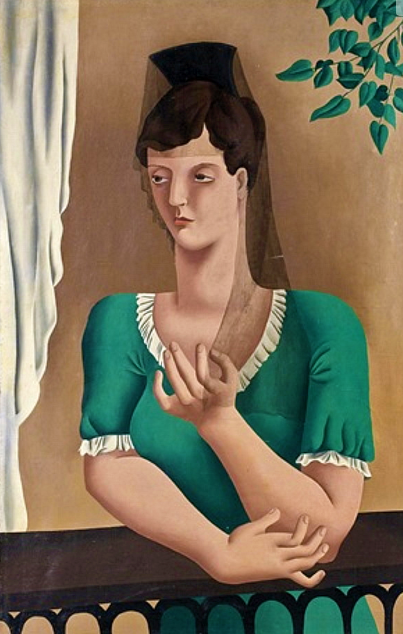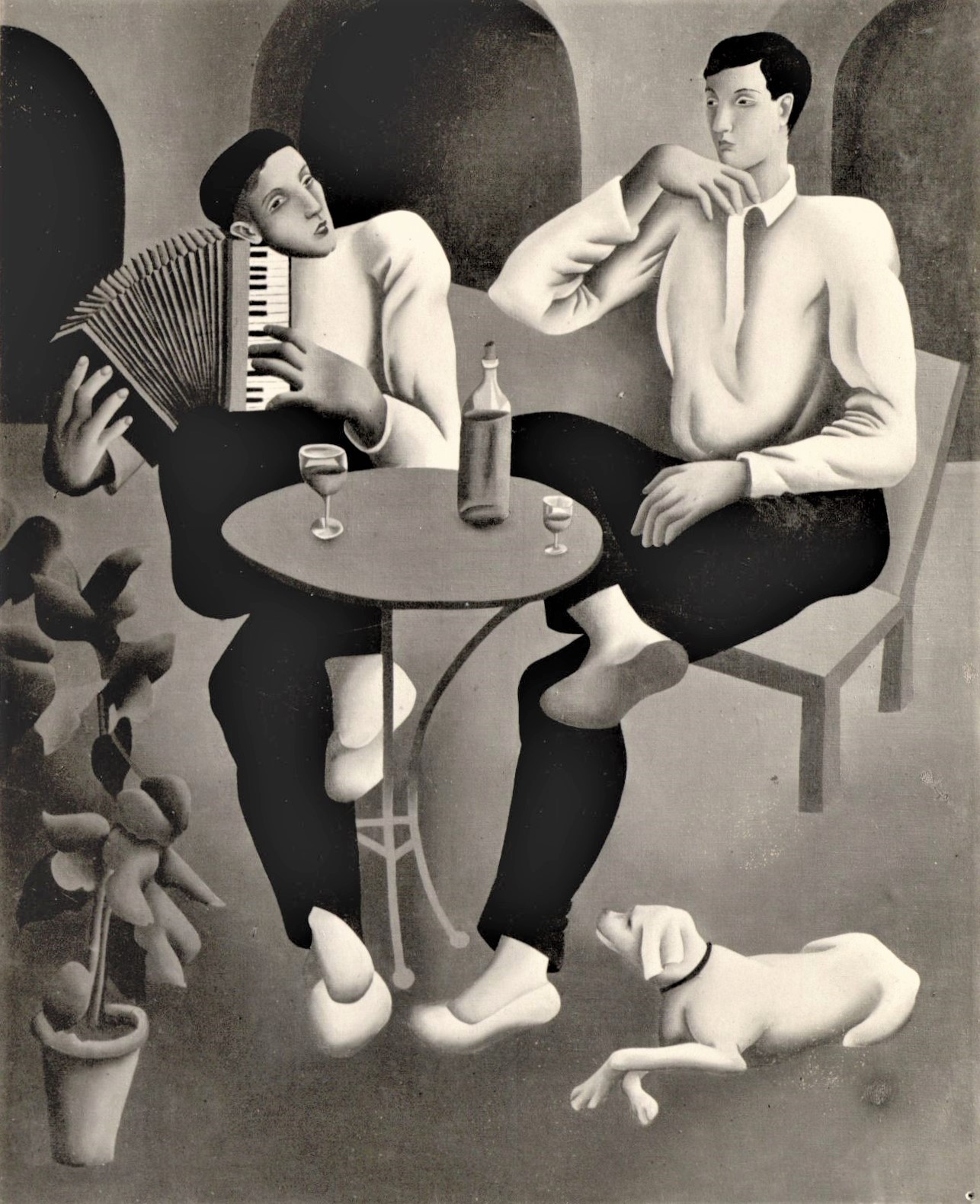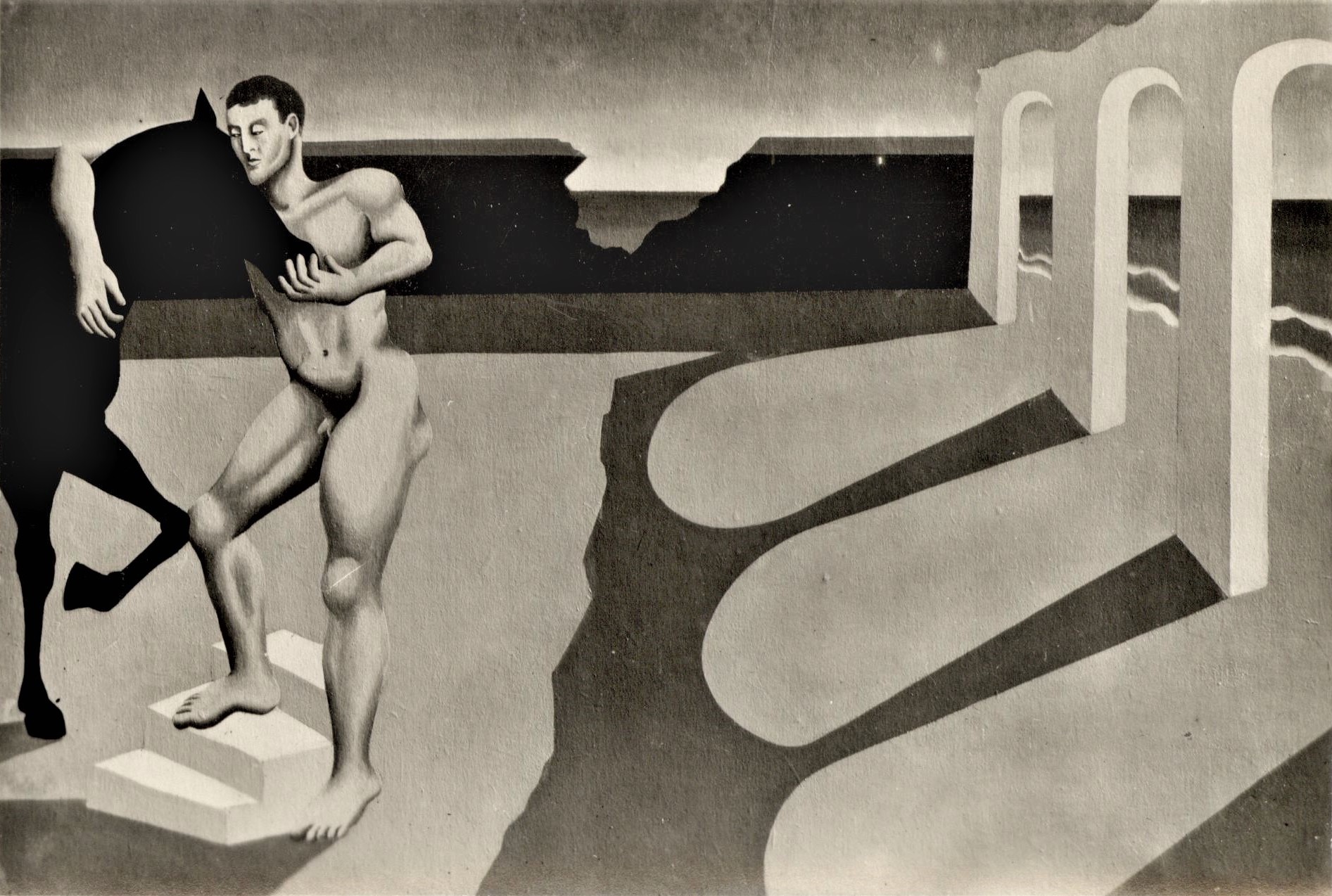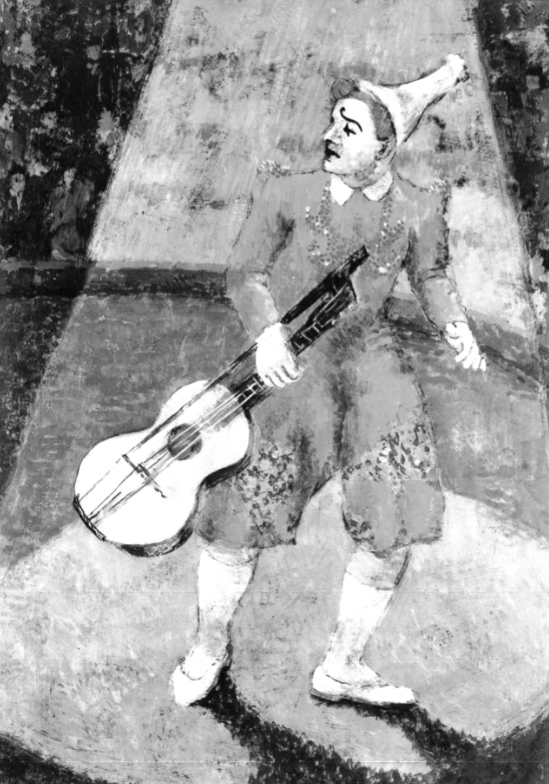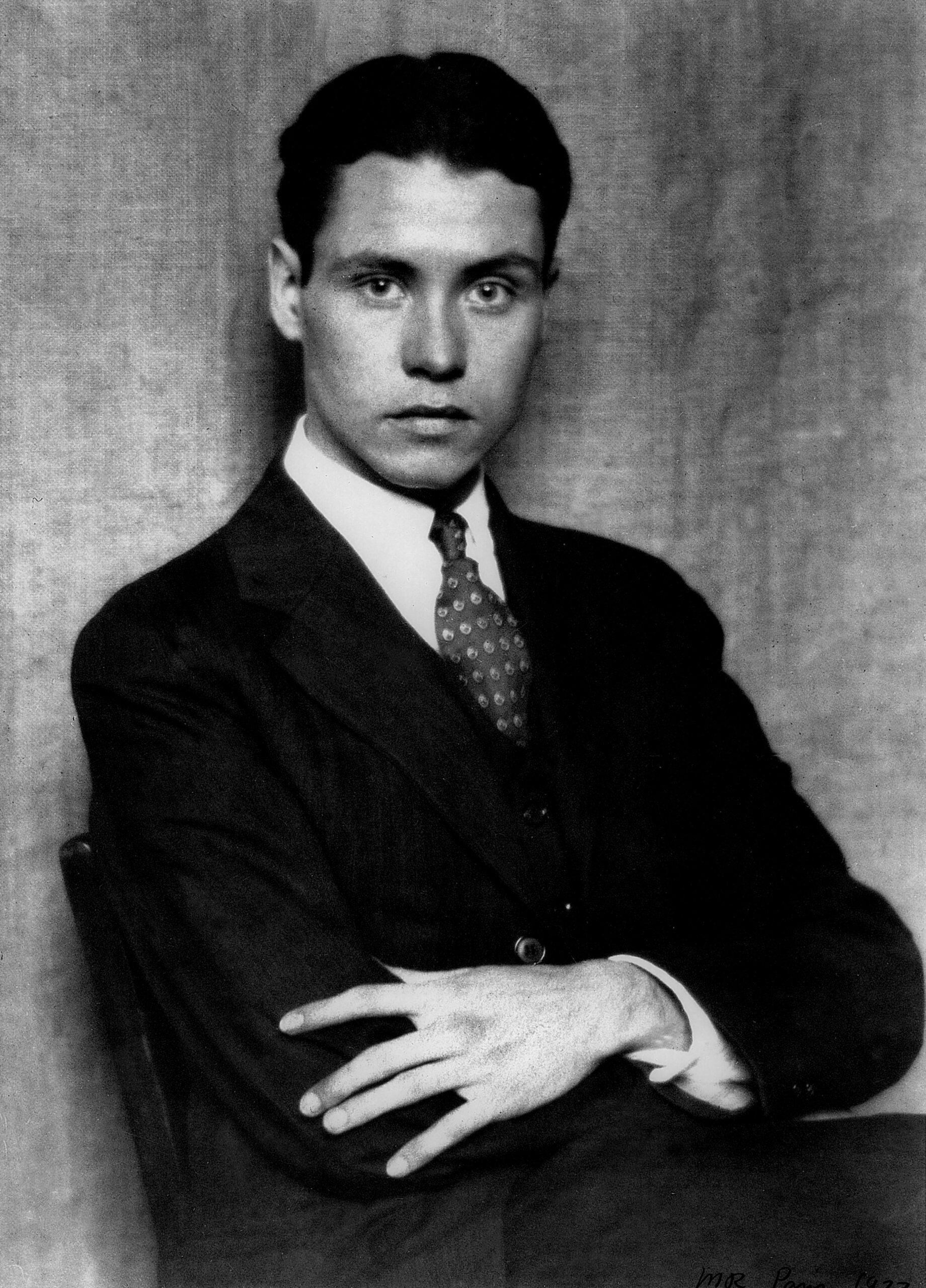 [1]
[1]Eugene McCown was born in El Dorado Springs, Missouri, on July 17, 1898, the son of a hardware dealer. Nobody could imagine he would become an artist and would have his paintings exhibited in some of the most prestigious French galleries alongside Giorgio de Chirico, Christian Bérard, Pavel Tchelitchew, and the Berman brothers.
When McCown was ten, his mother died. He was sent to Kansas City to his maternal uncle. There he was given a bourgeois education. He learned to play the piano and was also given drawing lessons. After two years of college at the University of Missouri, he moved to New York and studied with Andrew Dasburg and Eugene Speicher at the Art Students League. For six months, in 1920, he traveled through the West Indies to paint and in May 1920 his first productions were shown in Caracas. One year later, in 1921, he worked his way to France on a freighter and arrived in Paris with thirty dollars in his pocket. He was just twenty-three but felt very self-confident.
At first, he was engaged as a jazz pianist at the Boeuf sur le Toit, the famous Parisian nightclub. There, he made friends with many great artists of the time, musicians and writers alike (Cole Porter, Poulenc, Sauguet, F. Scott Fitzgerald, Janet Flanner, André Gide, Louis Aragon, René Crevel, etc.). In the daytime he used to go the Academy of La Grande Chaumière where Alexander Calder, Kit Wood, and occasionally Soutine would come to sketch. Soon he had his own studio just nearby, rue Campagne-Première, the street where Marcel Duchamp and Man Ray also lived.
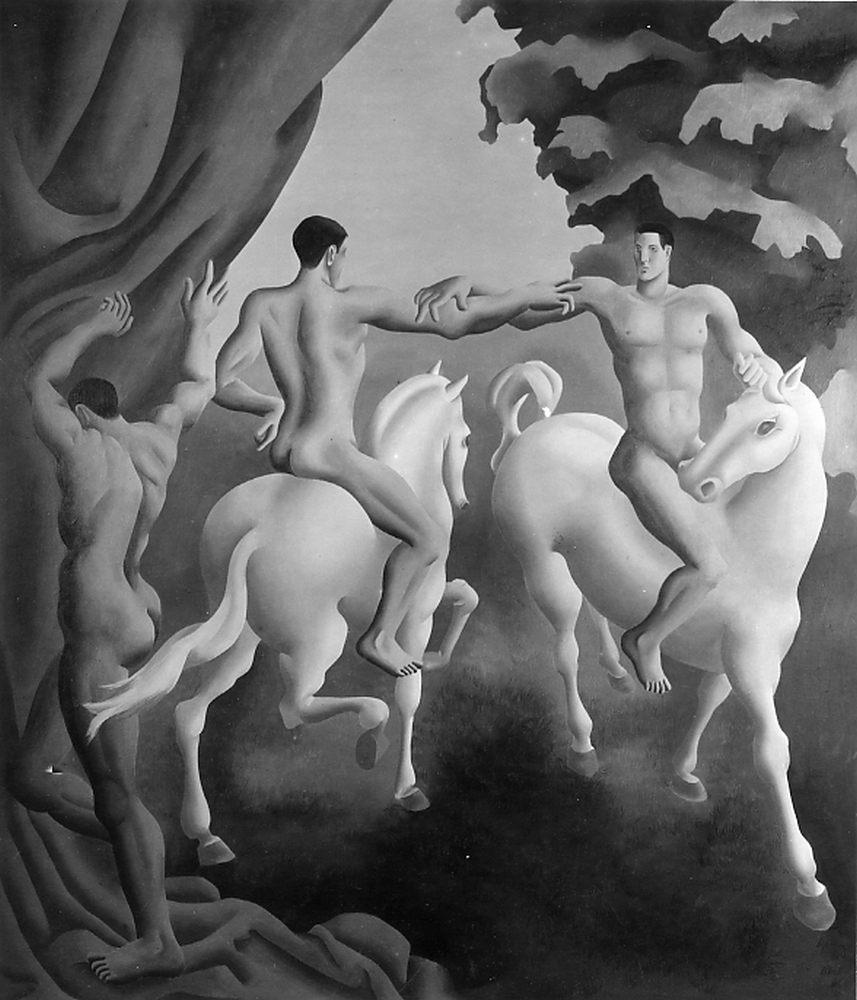 [2]
[2]The fact that McCown was good-looking and a true bon vivant worked its magic. With Jean Cocteau’s support, his artistic career as a painter was launched and had an immediate success. In March 1925, he had his first show in Paris at the Effort moderne, Léonce Rosenberg’s gallery. All his canvases were sold within a week. Clive Bell, Waldemar George, and Maurice Raynal promoted his art. McCown’s paintings usually depict men in various stages of intimacy, though the homoerotic charge of his paintings was never mentioned by critics. In his earlier manner, influenced by Henri Rousseau and the Quattrocento Italians, McCown’s style was often labelled as “naïve” or “decorative.” In those paintings, reviews praised his “highly poetic work” as well as “the cleanness of line and the delicacy of detail.” Thanks to this first success, he had a series of individual shows in Europe and in the US at the Galerie Théophile Briant (Paris, 1929), Marie Sterner Gallery (NYC, 1930), and Galerie Vignon (Paris, 1931) and was also part of group exhibitions: at MoMA, “46 Painters and Sculptors under 35 Years of Age[3],” 1930) and Galerie de la Renaissance, “Artistes américains modernes de Paris” (Paris, 1932).
From 1927, his compositions mixing arches and men in the sun can be regarded as an homage to Giorgio de Chirico. At the end of the thirties, his paintings of ballet dancers or circus acrobats in tender pastel shades carry the mark of Picasso’s Blue and Pink period or of early works by Pavel Tchelitchew[4]. In spite of the support of private collectors in Paris, Berlin, London, Geneva, and Nice, McCown experienced difficulty in maintaining the attention of the art connoisseurs.
In 1933, embittered and worried by political tensions in Europe, he sailed back to the US and settled in New York City. He was active until 1945, mainly as part of the Federal Art Project (FAP). After WWII, he sunk into alcoholism and poverty. After struggling with suicidal depression, he died alone at the Manhattan Metropolitan Hospital on April 23, 1966.
- [Image]: https://asllinea.org/wp-content/uploads/2021/06/McCOWN_Eugene_by_Man-RAY_Paris_1922-_JK-Collection-scaled.jpeg
- [Image]: https://asllinea.org/wp-content/uploads/2021/06/Les_Deux_Cavaliers_Nus_by_Eugene_McCOWN_1925.jpg
- 46 Painters and Sculptors under 35 Years of Age: https://assets.moma.org/documents/moma_catalogue_2025_300061834.pdf
- Pavel Tchelitchew: https://www.moma.org/artists/5821#works

